There are SO many free things to do in Berlin, Germany! It’s easy to stick to a budget when visiting, which is just one reason to love it here!
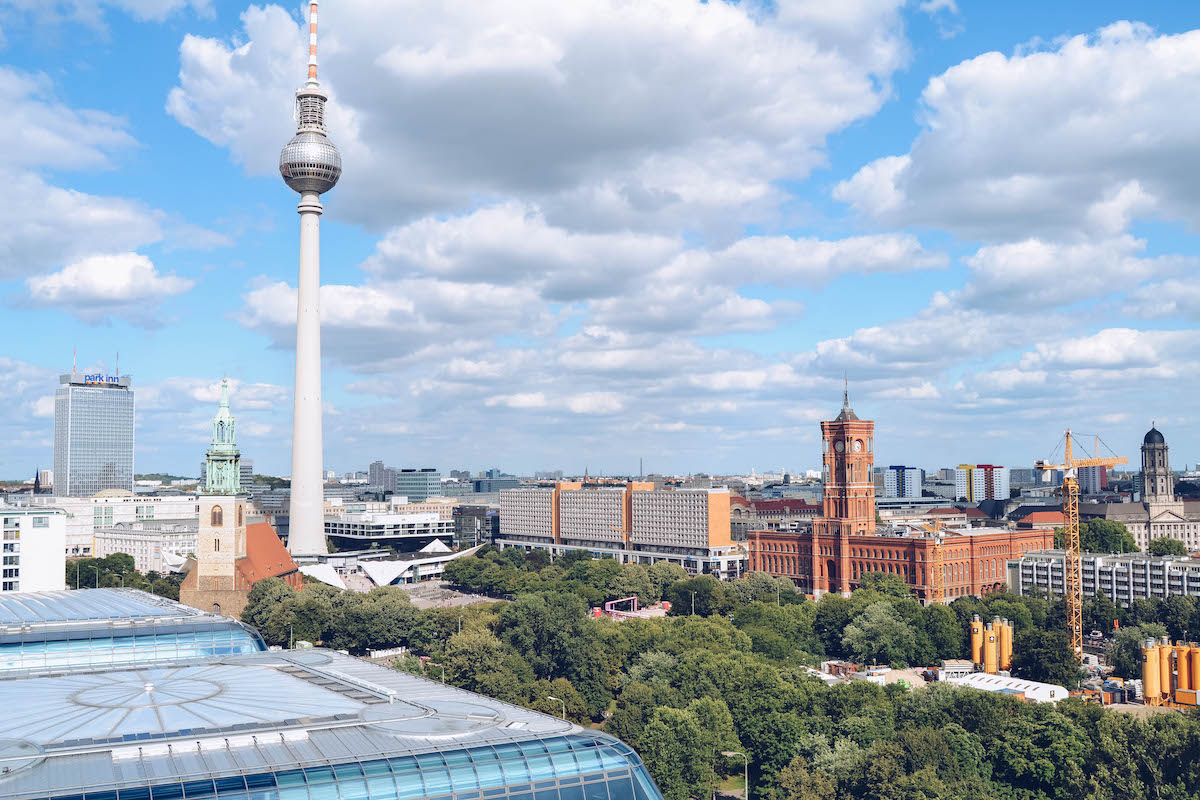
Berlin is one of Europe’s most underrated capitals, in my humble opinion. Too many people flock to the likes of Rome, Paris, and London and skip straight over Berlin. Although I love the capital cities I just mentioned, Berlin has my heart! Since moving to Berlin in 2019, I’ve fallen completely head over heels for this unique city.
Not only does Berlin have a fascinating history — its role in WWII and the Cold War is just the tip of the iceberg! — but it’s also an all-around vibrant place to visit. If you’re not sure what to do in Berlin, check out the lengthy list of free activities below. Because that’s another reason to visit Berlin — it’s cheap! There are SO many free things to do in Berlin. It’s easy to stick to a budget when visiting Germany’s capital city, and you won’t feel like you’re missing out whatsoever.
Now, let’s dive into my favorite free activities in Berlin! Buckle up, it’s a long list.
Table of Contents
Click “show” to see the full table of contents for this post. You can jump around the post as desired by clicking on the individual sections listed below.
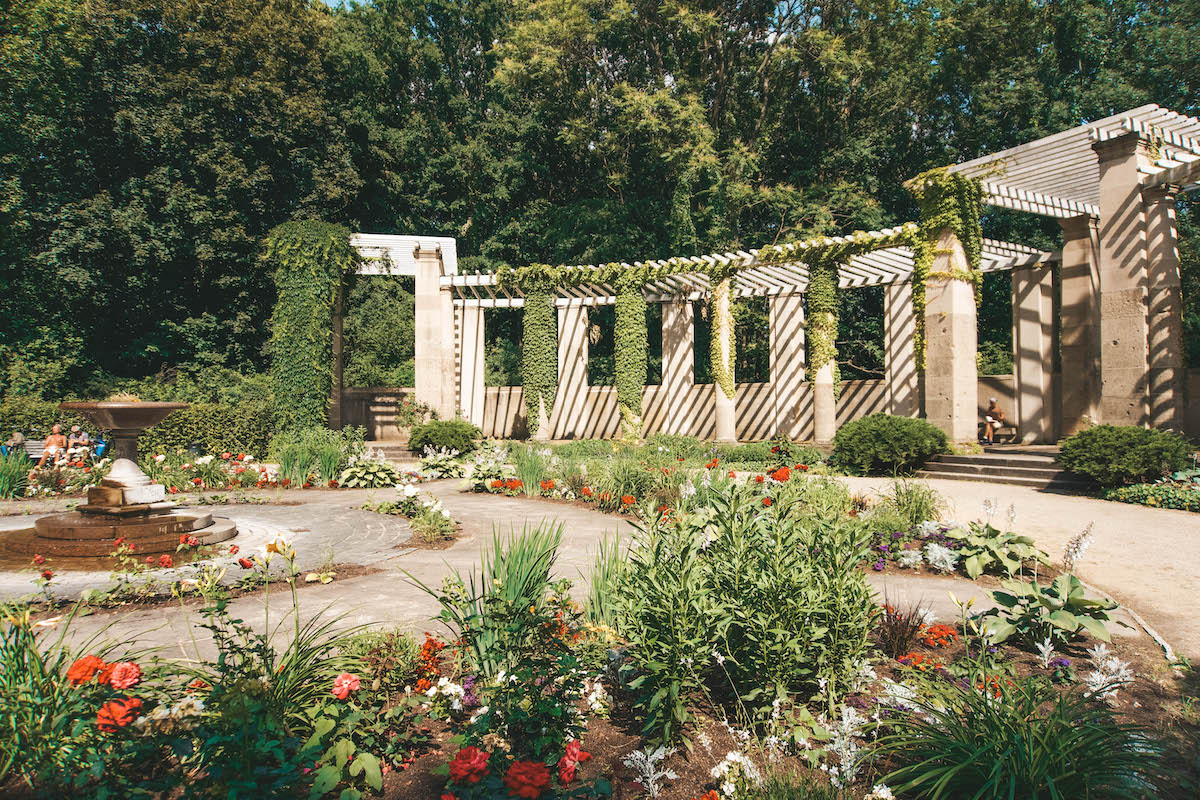
1. Walk Through Tiergarten Park
Once the royal hunting ground for King Friedrich III, Tiergarten Park underwent a massive transformation in the 1830s after the land was opened to the public. The park was all but destroyed during WWII, and following the war the remaining trees were felled to use as fuel during a particularly brutal coal shortage.
Walking around the park today, you’d never guess the number of times it’s been destroyed and redesigned. Most of the park is open green space, but there are manicured gardens dotted throughout it (the rose garden is my favorite!).
2. Visit the Topography of Terror
The grounds of the Topography of Terror (Topographie des Terrors) served as the headquarters of the Nazi Secret State Police (SS) and the Reich Security Main Office from 1933 to 1945. Today, there’s a simple, modern building on site that houses extensive exhibitions about the central institutions of the SS and the police force under Hitler’s Third Reich. There are also a number of rotating exhibits, all dealing with WWII and the far-reaching impact the Holocaust had on Europe at large.
There’s a lot to read at the Topography of Terror and many of the images on display are disturbing. However, it’s well worth spending an afternoon at this museum to better educate yourself on the atrocities that took place under Nazi rule.
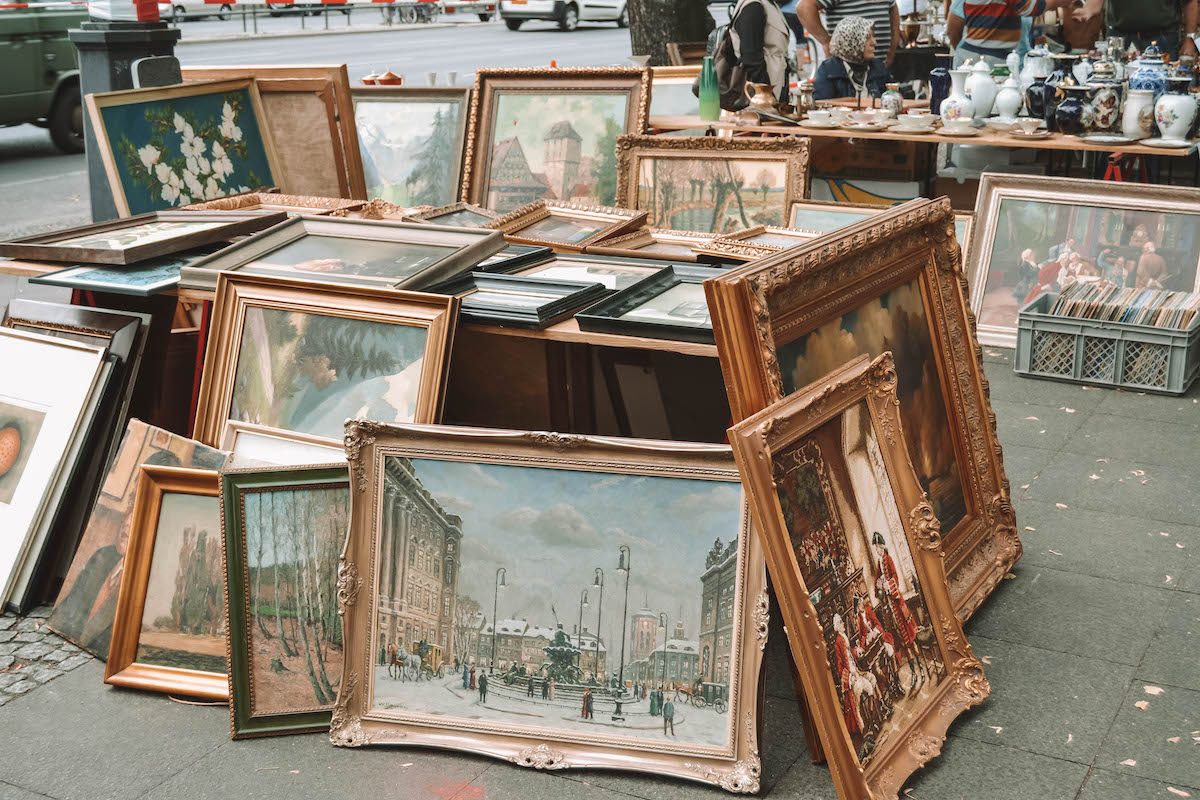
3. Go Flea Market Shopping
Weekends in Berlin are made for flea markets! Locals love hunting for treasures at one of the city’s many flea markets (seriously, there’s one in almost every neighborhood!). The oldest flea market is on the Straße des 17. Juni. Here you’ll find mostly higher quality furniture, porcelain, clothing, and so forth. It’s my personal favorite in Berlin even though it’s typically the most expensive. The flea market at Ostbahnhof is known for its antiques, and although it’s smaller there’s still plenty to sort through here. Make sure to bring cash if you plan on haggling for an item! Otherwise you can admire the goods free of charge.
4. Take a Free Walking Tour
Pretty much the only type of group tour I actually enjoy are group walking tours. I think it’s the best way to see a city and learn about its history. I recently went on the Sandeman’s free Berlin walking tour and thoroughly enjoyed it, although it focused primarily on WWII and the time of the Berlin Wall. Free Tours by Foot also offers a number of free Berlin walking tours. I’ve not yet taken one of their Berlin tours, but I’ve done tours with them in London, NYC, Belgium, and more and have always had a fantastic experience!

5. Walk Along the East Side Gallery
You can’t come to Berlin and not visit the largest remaining section of the infamous Berlin Wall. Today, the East Side Gallery is the longest open-air gallery in the world, but not too long ago it divided East Germany and West Germany. People lost their lives trying to sneak across the wall, and many German families spent years apart because of it. Although the East Side Gallery is a unique platform for street artists to display their skills, it’s also a sobering reminder of Cold War and everything it entailed.
6. Walk Down Unter den Linden
Located in the heart of Berlin, Unter den Linden is one of the most famous boulevards in the city. It began as a humble horse path in the late 1500’s and was later extended and built up by Frederick the Great. The 1.5km boulevard stretches from the Berlin Cathedral all the way to the Brandenburg Gate.
Along the way, you’ll pass the Staatsoper (Opera House), the Neue Wache (a memorial to to the victims of war and dictatorship), the German History Museum, and the Humboldt Forum. Historically, Unter den Linden was lined with lime trees — hence the name — but after being largely destroyed in WWII and subsequently rebuilt, the boulevard hasn’t yet returned to its former glory.
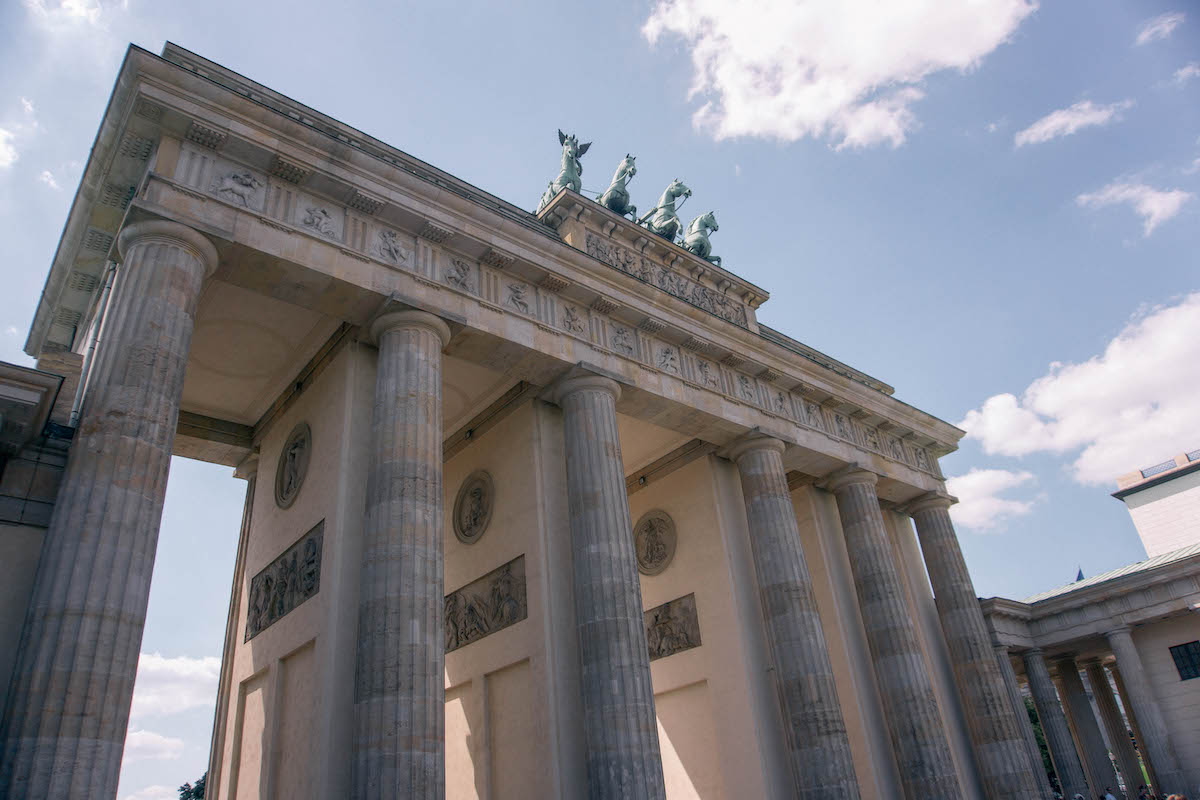
7. See the Brandenburg Gate
The Brandenburg Gate is a Berlin icon. It’s been the site of many historic moments, including US President Ronald Regan’s 1987 speech where he proclaimed, “Mr. Gorbachov, tear down this wall!” During the Cold War, visitors in the West could look down into East Berlin from the Brandenburg Gate’s viewing platform. Today, the gate is a symbol of unity for the German peoples and is one of the top things to do in Berlin.
8. Pay Your Respects at the Holocaust Memorial
Just a few minutes away from the Brandenburg Gate is the Holocaust Memorial (formally titled The Memorial to the Murdered Jews of Europe). Comprised of 2,711 concrete slabs spanning 19,000 square meters, the memorial is immense. Visitors are encouraged to interact with the memorial; as you walk further and further into the maze of concrete slabs, the ground dips slightly below you and it feels like the concrete is rising up to suffocate you. What you think the memorial is trying to accomplish is up for you to decide.
Please note: It is highly disrespectful to take selfies in front of or within the memorial. Also, do NOT stand or sit atop the concrete slabs. This is a place of remembrance and reflection.
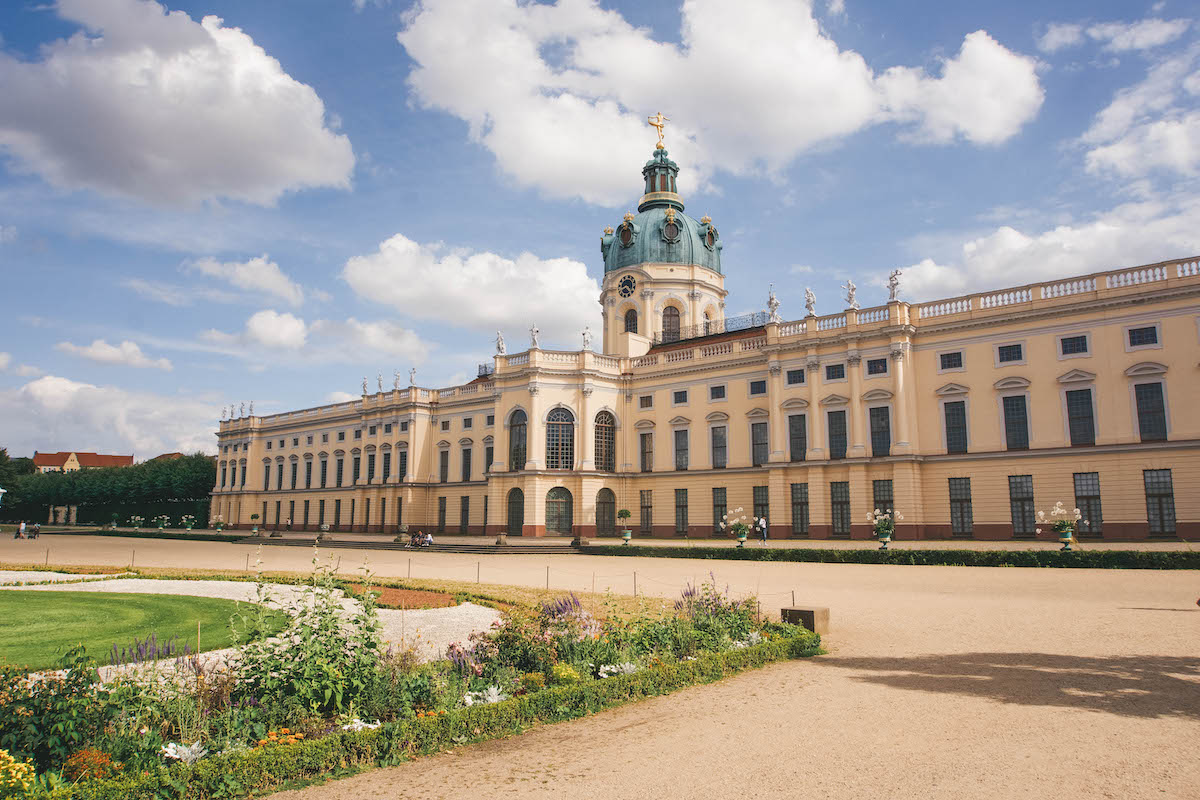
9. Stroll Through the Charlottenburg Palace Gardens
I think I’ve written more about Charlottenburg Palace than any other attraction in Berlin! Completed in 1699, Charlottenburg Palace was originally the summer palace of Queen Sophie Charlotte. You can pay to tour the palace itself (which I highly recommend doing if it’s within your budget), but the garden and grounds surrounding the palace are open to the public. This is one of my favorite spots to visit in the spring and summer.
Once the weather warms up, a flock of sheep are let loose on the grounds to act as nature’s fluffy lawnmowers. The sheep are moved once per week, so they always pop up in a new spot each time I visit!
Read more: Your Guide to Visiting Charlottenburg Palace
10. Go Hiking in the Grünewald
Hiking is technically too strong a verb to use for what you can do in the Grünewald forest. Berlin is an incredibly flat city, so a visit to the Grünewald is really more of a strenuous stroll. Regardless, there are so many interesting places to explore within the forest. The best known is the Teufelsberg, which is a hill topped by a Cold War-era listening station (no longer in use, don’t fret!). The forest is also dotted with lakes and in the summer you’ll run across flocks of sheep grazing in open meadows. Snacks and lots of water are a must when hiking in the Grünewald as there aren’t many places to grab a bite to eat once you go in!
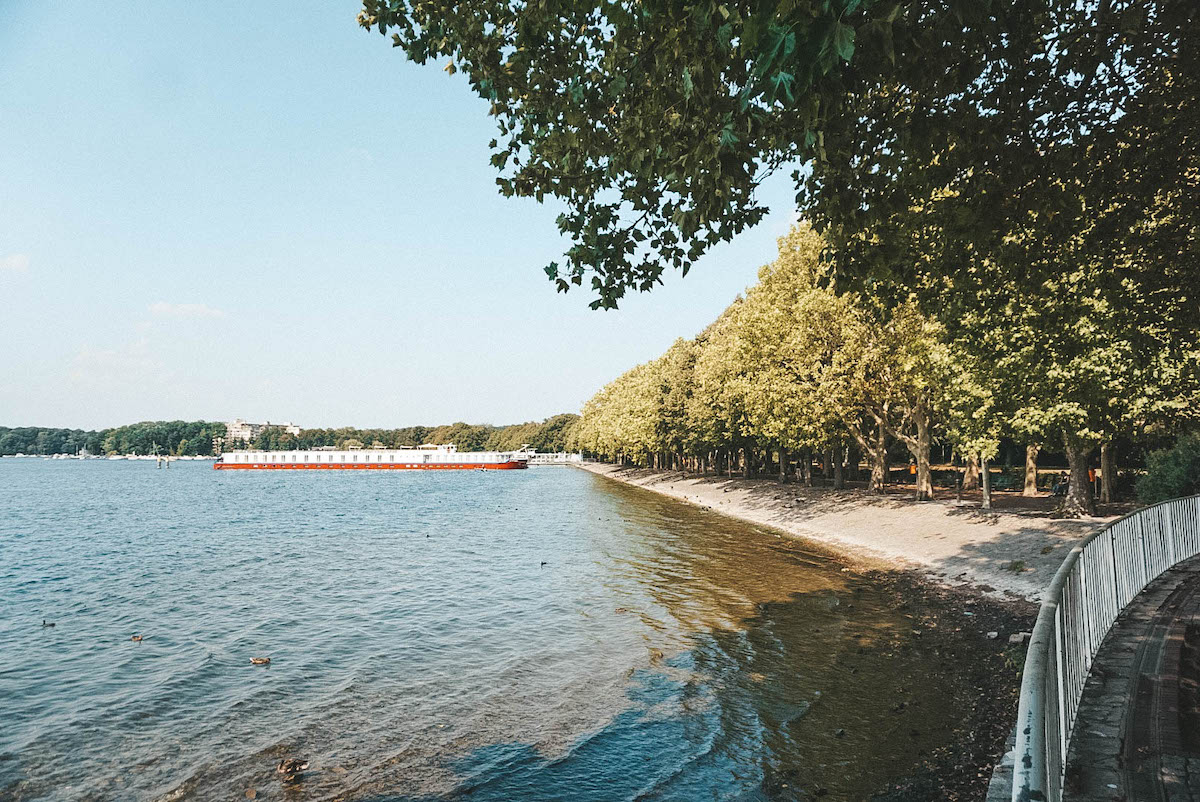
11. Relax by the Lake
Did you know that Berlin and the surrounding area of Brandenburg are known as the “land of 3,000 lakes?” Berliners flock to the city’s many lakes in the summertime, bringing picnics and lawn games with them for entertainment. Some of the most popular lakes in the area are Weißensee, Tegelersee, Krumme Lanke, and Schlachtensee. I recommend spending a day by the lake during the work week as all the best sunbathing spots fill up quickly on the weekend. If you do visit on the weekend, get to the lake well before lunchtime otherwise you won’t find a spot to lay out, period.
12. Ride the 100 Bus
The 100 bus route is historically significant. The route was created after the reunification of East and West Germany and connects the two. Rather than shell out for an expensive hop on / hop off bus tour of the city, buy a day pass for the public transit system and ride the 100 bus route around the city. Along the way, you’ll pass Alexanderplatz (where the TV tower is), Museum Island, the Brandenburg Gate, KaDeWe (West Germany’s impressive department store), the Zoologischer Garten, and so much more!
Technically this isn’t a “free” thing to do in Berlin, but you’ll have to pay for public transit anyways while you’re in the city.
Read more: Your Guide to Berlin’s Public Transport
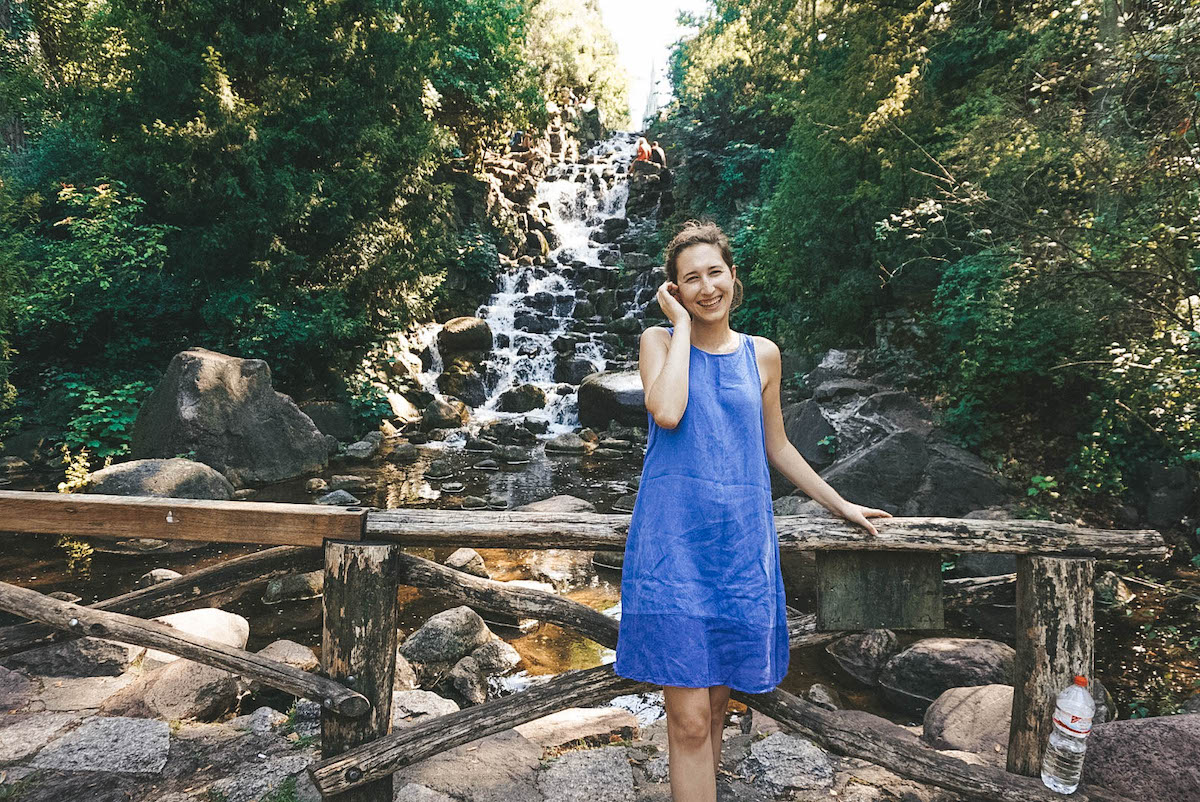
13. Picnic in a Local Park
Berlin is dotted with hundreds of parks and gardens, most of which are free to the public. Some of my favorite parks in Berlin are: Tiergarten Park (mentioned in this post), Viktoriapark (pictured above), Volkspark Friedrichshain, and Tempelhofer Feld (site of a former airport). You can picnic or grill out at most of the parks in Berlin, making them great places to unwind and blend in with the locals!
Read more: The Best Parks in Berlin You Need to Visit
14. Attend a Free Lunchtime Concert at the Philharmonic
Every Wednesday at 1pm between September and June, the Berlin Philharmonic performs a free lunchtime concert. The concerts last roughly 40 to 50 minutes and feature performers from the Philharmonic, the Deutsches Symphonie-Orchester and the Staatskapelle Berlin. As the name suggests, you’re welcome to bring your lunch with you to the concert — but maybe bring something that’s quiet to chew.
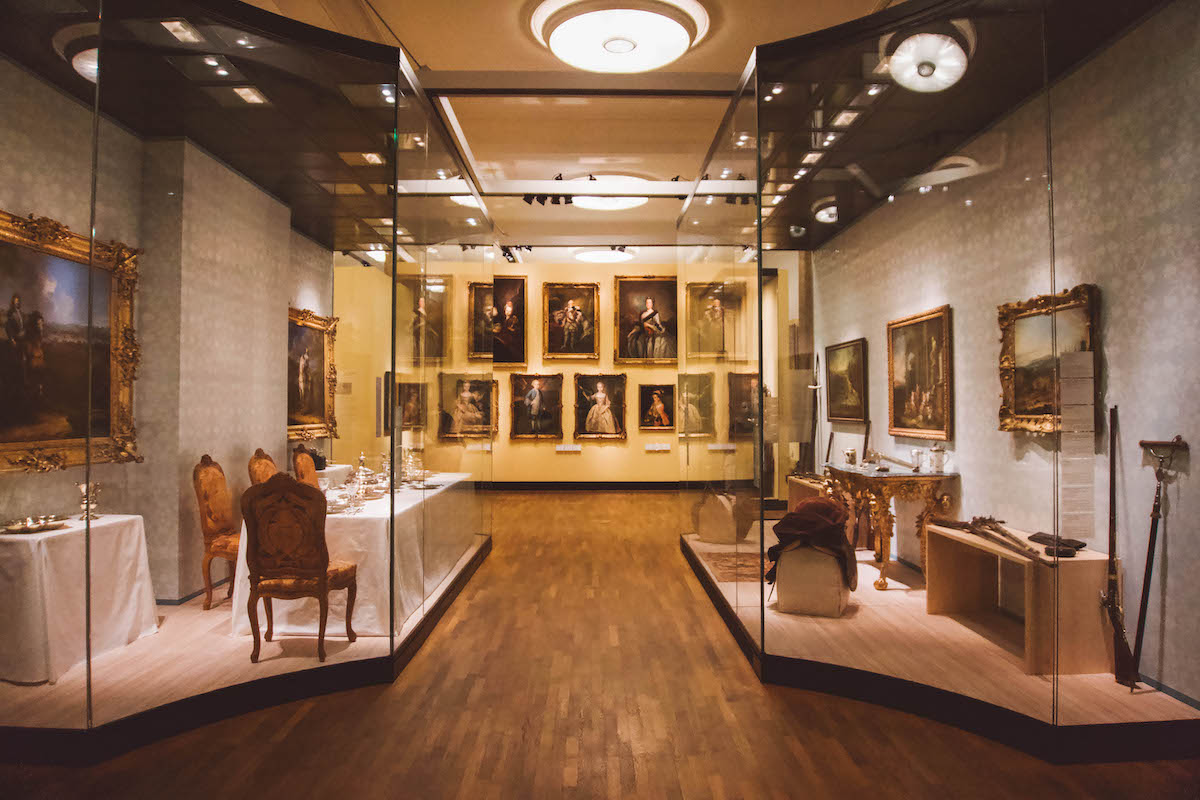
15. Relive the Past at the German History Museum
When considering what to do in Berlin, I highly, highly recommend a visit to the German History Museum (Deutsche Historische Museum). The museum is housed in the former Royal Prussian armory. The permanent exhibit is always free; it’s outlines the history of Germany from the Middle Ages to the fall of the Berlin Wall and showcases over 7,000 objects. You’ll need at least four hours to see everything in the museum, and there’s a lot of text to read. If desired, you can rent an audio guide for a few Euros.
16. Visit the Berlin Wall Memorial
The Berlin Wall Memorial contains the last preserved piece of the Berlin Wall and extends about 1.4 km. Both the wall itself and the border strip surrounding it have been preserved, so it’s easier for you to get a sense of just how horrible the division of Berlin was. The memorial has an open-air exhibit that explains the history of Germany’s division, and there’s also a separate memorial to the victims of communist tyranny.
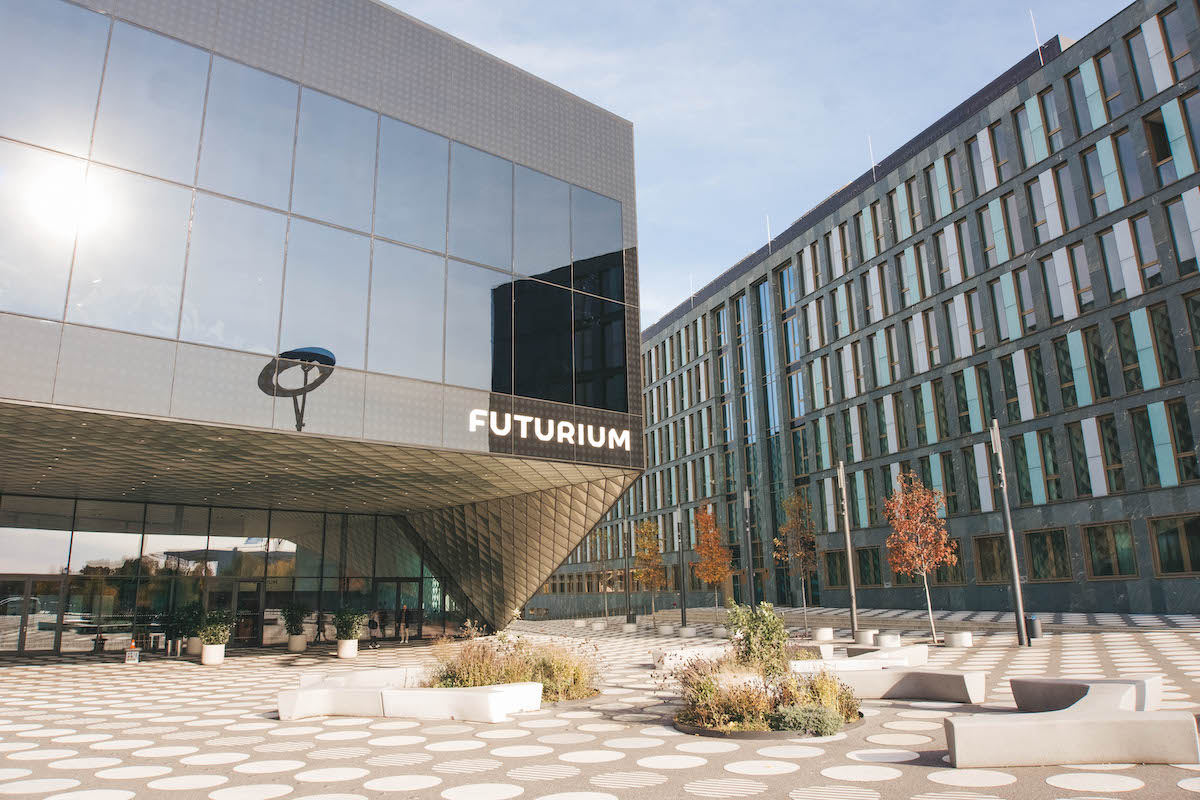
17. Travel to the Future at the Futurium
How best to describe this one-of-a-kind exhibit? Essentially, the Futurium is a House of Futures. Upon checking into the exhibit, you’re given a wristband. This wristband assigns you a person in the future, and you then learn more about who “you” are and how future developments will affect you. Basically, the Futurium is one big thought experiment that’s intended to make you question your actions today so you can help create the future you want.
18. Window Shop Along the Ku’damm
Short for Kurfürstendamm, the Ku’damm is a well-known shopping street in West Berlin. It’s been compared to the Champs-Elysees in Paris, but the Ku’damm isn’t nearly as beautiful. However, it is jam-packed with shops and is a great place to spend an afternoon window shopping. Yes, I know this is a list of free things to do in Berlin, Germany, but remember: window shopping is free if you don’t buy anything!
While you’re strolling along the Ku’damm, be sure to pop into the iconic KaDeWe (Kaufhaus des Westens). It’s a well-known department store that was founded in the early 1900’s. It’s the second largest department store, after Harrods in London!
19. See the Kaiser Wilhelm Memorial Church
At the end of the Ku’damm is the Kaiser Wilhelm Memorial Church. It’s one of Berlin’s most famous landmarks; it was once an operating Protestant church but was almost destroyed in the 1945 allied air raids. Today, the memorial hall within the church displays photographs of Berlin before and after WWII. It’s a haunting anti-war memorial that’s well worth a visit.
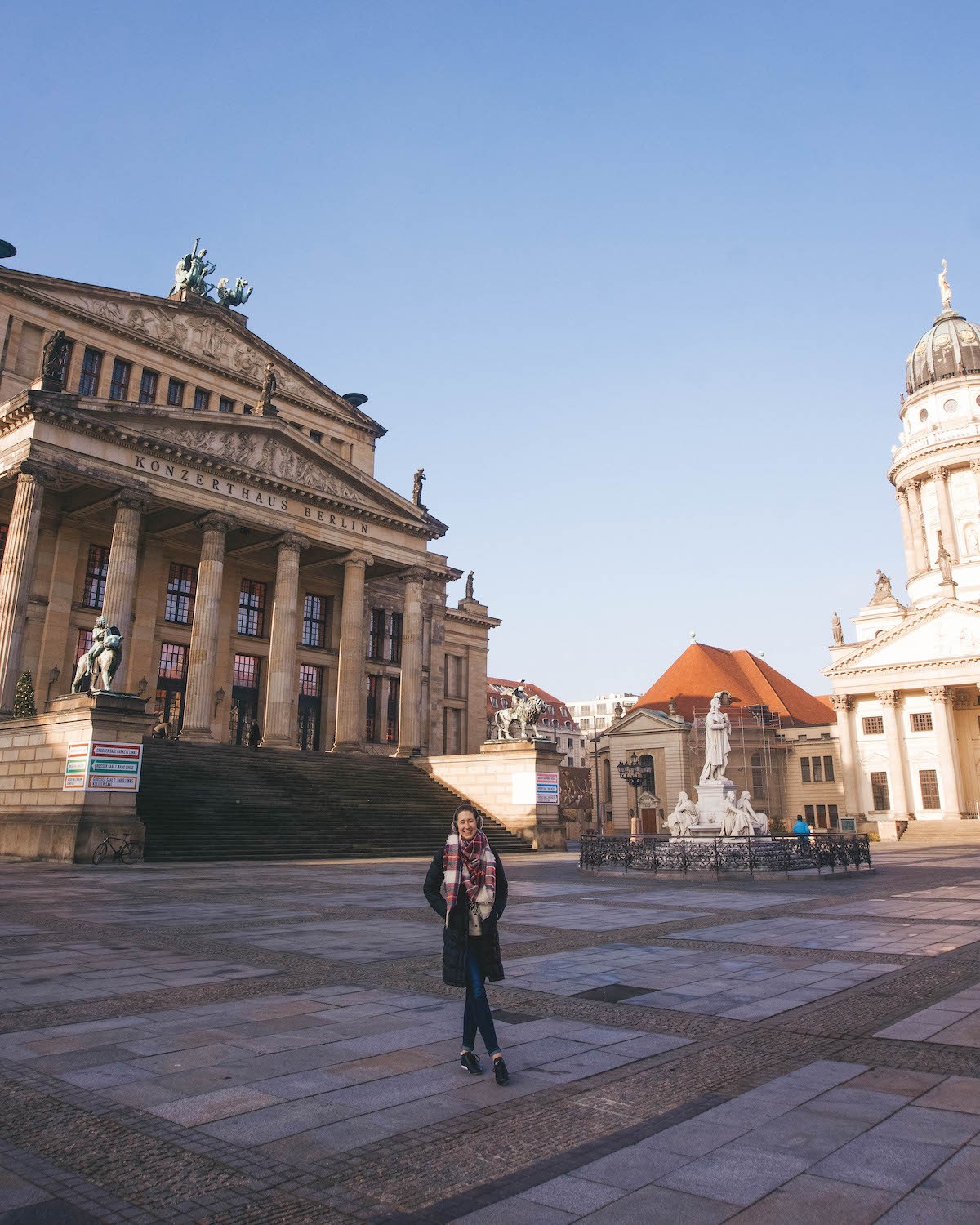
20. Admire the Twin Churches at Gendarmenmarkt
The Gendarmenmarkt is one of Berlin’s best known — and prettiest! — squares. It’s famous for the three buildings on site: the German Cathedral (Deutscher Dom), the French Cathedral (Französischer Dom), and the Concert Hall built by Carl Friedrich Schinkel. The square dates back to 1700 and it was once a site of refuge for the French Protestants seeking refuge in the Prussian capital. Today, the German Cathedral houses a free exhibit on the history of the German parliament. Even if you don’t visit the exhibit, I still highly recommend visiting Gendarmenmarkt because it’s just so beautiful!
21. Visit Checkpoint Charlie
Down the road from Gendarmenmarkt is another Berlin landmark: Checkpoint Charlie. Yes, Checkpoint Charlie is incredibly touristy these days, but its fascinating history makes it worth a visit. Checkpoint Charlie is perhaps the best known Allied checkpoints that allowed visitors to cross from West to East Berlin.
In October 1961, Checkpoint Charlie was the site of a tank standoff between US and Soviet forces. The confrontation lasted for about 16 hours, and people were terrified that it would spark WWIII. You have to remember that the Berlin Wall was built practically overnight just a few months prior, so this Cold War confrontation was a huge deal.
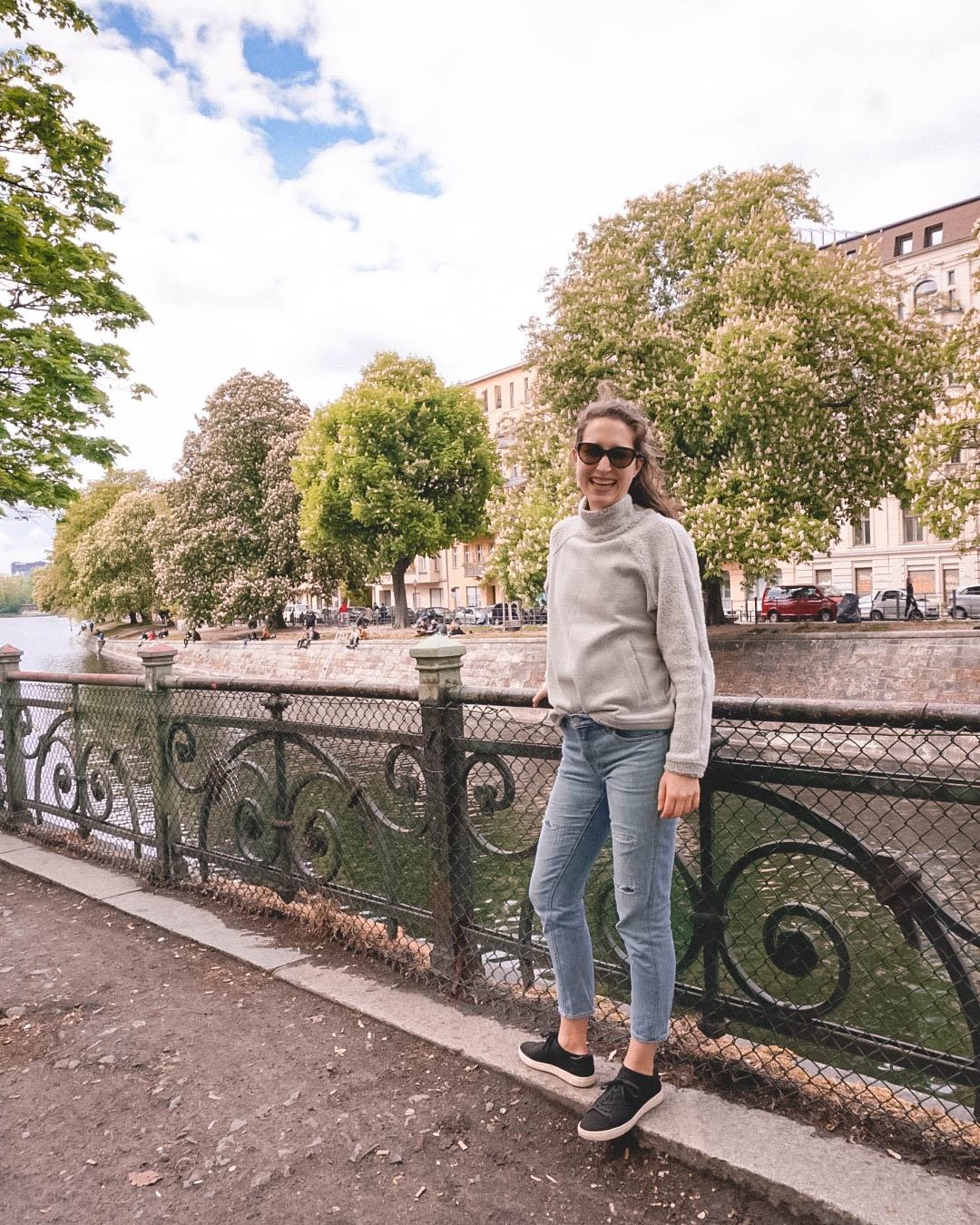
22. Walk Along the Canal
Many visitors to Berlin don’t realize that the Spree River cuts right through the city. The Landwehr Canal runs parallel to the Spree for about 10 km in the heart of Berlin, and it’s one of the nicest walks you can take in Berlin. Naturally, some areas of the city are nicer than others but in general a walk alongside the canal is one of the best ways to familiarize yourself with Germany’s capital city.
In the summer, the stetch of canal located in the Kreuzberg neighborhood is packed with locals. Definitely hit up a Späti (a local convenience store), grab a beer, and lay out by the canal for a bit!
23. Visit the Palace of Tears
The Palace of Tears (Tränenpalast) was a check-in hall near Friedrichstraße Station that passengers traveling from East to West Berlin had to use. Its name stems from the many tearful goodbyes that friends and family had to endure during the time of the Berlin Wall. The Palace of Tears now houses an exhibition called “Site of German Division,” which explains how the border crossings within a divided Germany worked. It’s meant to give visitors a glimpse into the past and to help better understand how difficult life under Soviet rule was.
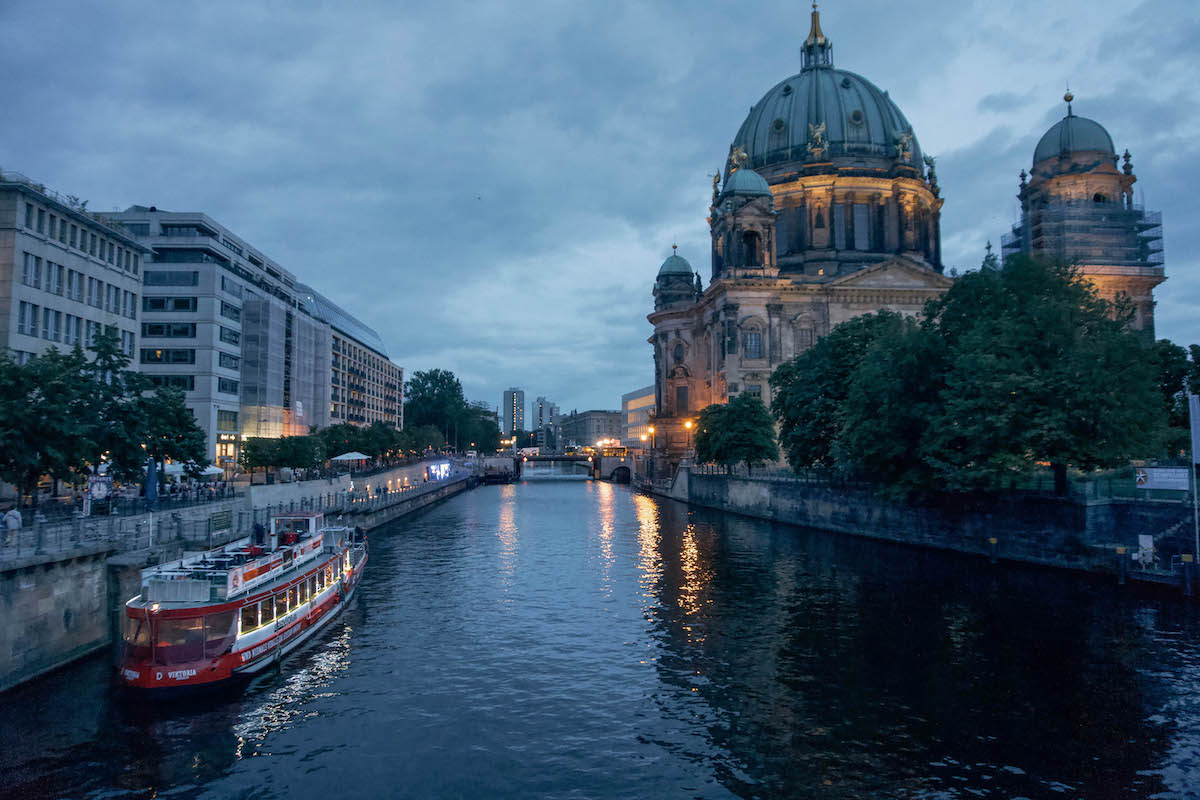
24. Enjoy the Architecture at Museum Island
Alas, you have to pay (a lot) to visit the museums on Museum Island (Museumsinsel). But even if it’s not within your budget to go into them, they’re still worth admiring from the outside! Museum Island is a UNESCO World Heritage Site comprised of five world-class museums.
The first museum built was the Altes Museum (Old Museum) in 1830. It was created to showcase historic pieces of art to the public. Over the next 100 years, the final four museums were built and the area was dubbed “Museum Island.” During WWII, the Nazis planned to convert all the buildings but their plans never went through. Most of the museums were all but destroyed in the war, so the buildings seen today are fairly new, all things considered. Museum Island was made a UNESCO World Heritage Site in 1999. I should mention that it’s also home to the Berlin Cathedral, which is also stunning!
25. Pay Your Respects at the Sachsenhausen Concentration Camp
Located in the outskirts of Berlin is the site of the Sachsenhausen Concentration Camp, which was conceived as an “ideal concentration camp” and played a special role in Hitler’s Third Reich. Between 1936 and 1945, more than 200,000 people were imprisoned here. Of those, only about 3,000 were eventually liberated by Soviet forces at the end of the war.
Entrance to the exhibits and memorial at Sachsenhausen is free. The exhibits detail the history of the camp and some of the prisoners who lived and died there. The historic prison building has been almost wholly preserved and is open to visitors.
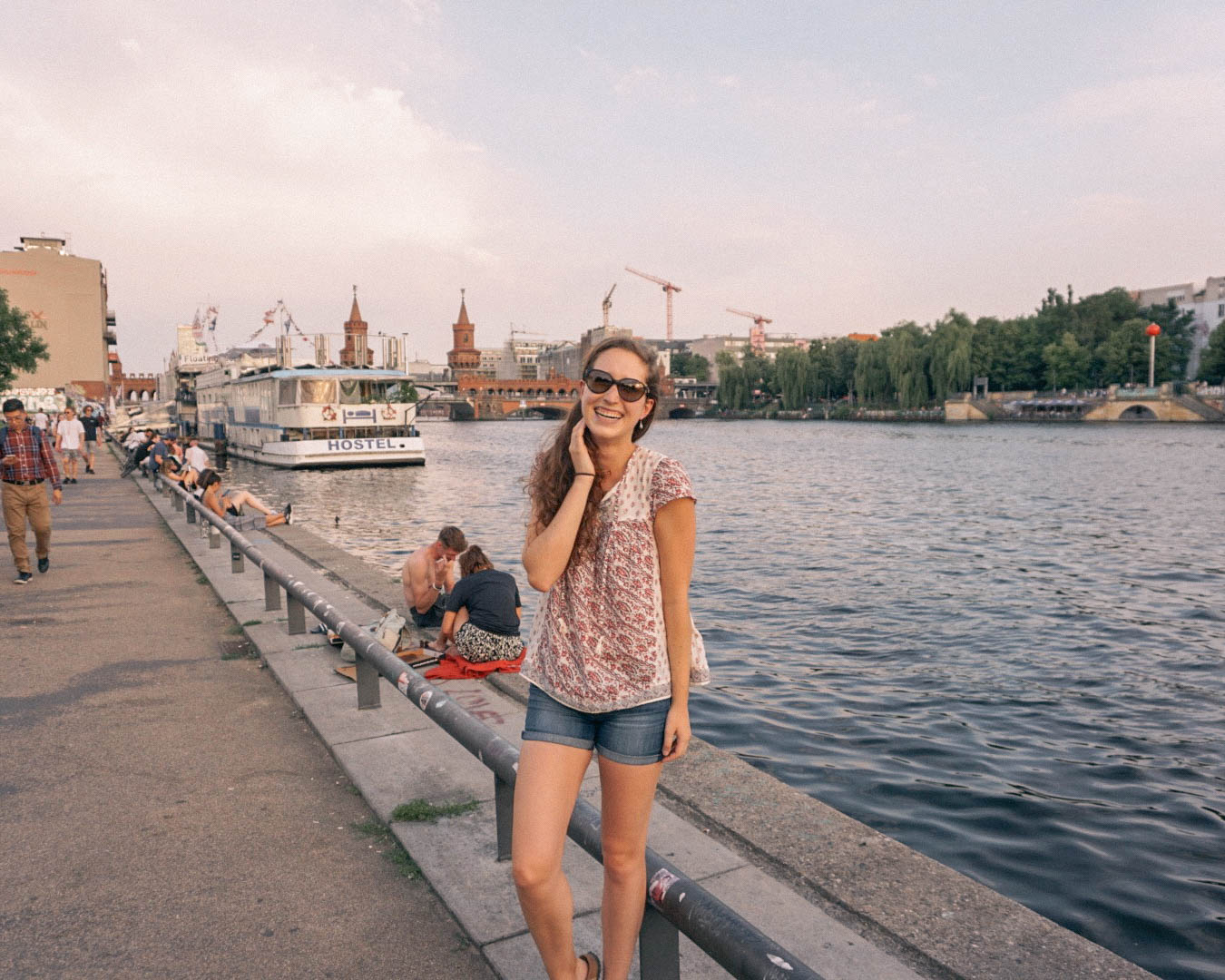
What Else to Do in Berlin…
Believe it or not, there are even more things to do in Berlin, Germany! I’ve only shared the free stuff in this post, but I’ve given more suggestions on what to do in Berlin in the following posts:
- The Top 10 Things to Do in Berlin on Your First Visit
- My Favorite Summer Activities in Berlin
- 10 Things to Know Before Visiting Berlin
Let me know if you have any questions about visiting Berlin or if there’s anything else I can help with. I’ve lived here since 2019, so I’ve explored much of this interesting city already!

Leave A Reply!